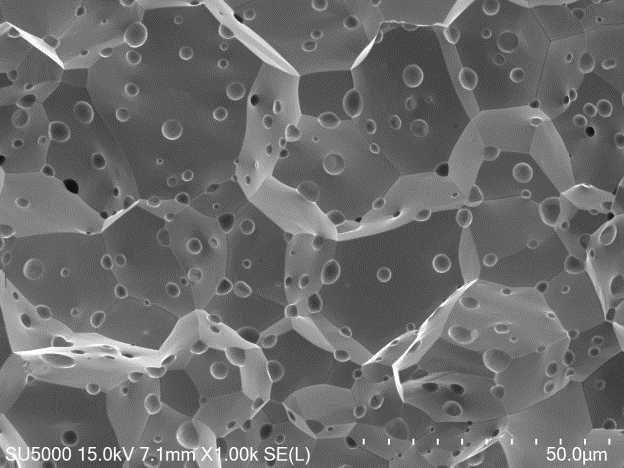
本实验射流分级采用的设备为微型射流分级机,该设备的工作原理为柯安达效应。射流分级机的主要工艺参数是送粉气压和分级刀的位置,为获得性能最优分级粉末,本项目以平均粒度3.2μm与平均粒度5.5μm的钨粉为原料,进行分级工艺参数探究。实验结果表明,对于平均粒度3.2μm的原料钨粉,最优工艺参数为:供气压力设为0.1MPa,细粉分级刀位置拨到15mm,中粉分级刀位置拨到25mm,分级后所收集的细钨粉占比4.7%,中钨粉占比62.5%,粗钨粉占比32.8%。在相同工艺参数下,对于平均粒度5.5μm的原料钨粉,分级后收集的细钨粉占比1.4%,中钨粉占比59.2%,粗钨粉占比39.4%,中粉收得率也比较理想。
The equipment used for jet classification in this experiment is a mini jet classifier, and the working principle of this equipment is the Coanda effect. The main process parameters of the jet classifier are the powder feeding air pressure and the position of the grading knife. In order to obtain the best graded powder, this project uses tungsten powder with an average particle size of 3.2μm and an average particle size of 5.5μm as raw materials to explore the classification process parameters. The experimental results show that for raw tungsten powder with an average particle size of 3.2μm, the optimal process parameters are: the air supply pressure is set to 0.1MPa, the position of the fine powder classifying knife is set to 15mm, and the position of the medium powder classifying knife is set to 25mm, and the collection is collected after classification. The fine tungsten powder accounted for 4.7%, the medium tungsten powder accounted for 62.5%, and the coarse tungsten powder accounted for 32.8%. Under the same process parameters, for the raw tungsten powder with an average particle size of 5.5μm, the fine tungsten powder collected after classification accounts for 1.4%, the medium tungsten powder accounts for 59.2%, and the coarse tungsten powder accounts for 39.4%. The yield of medium powder is also Ideal.